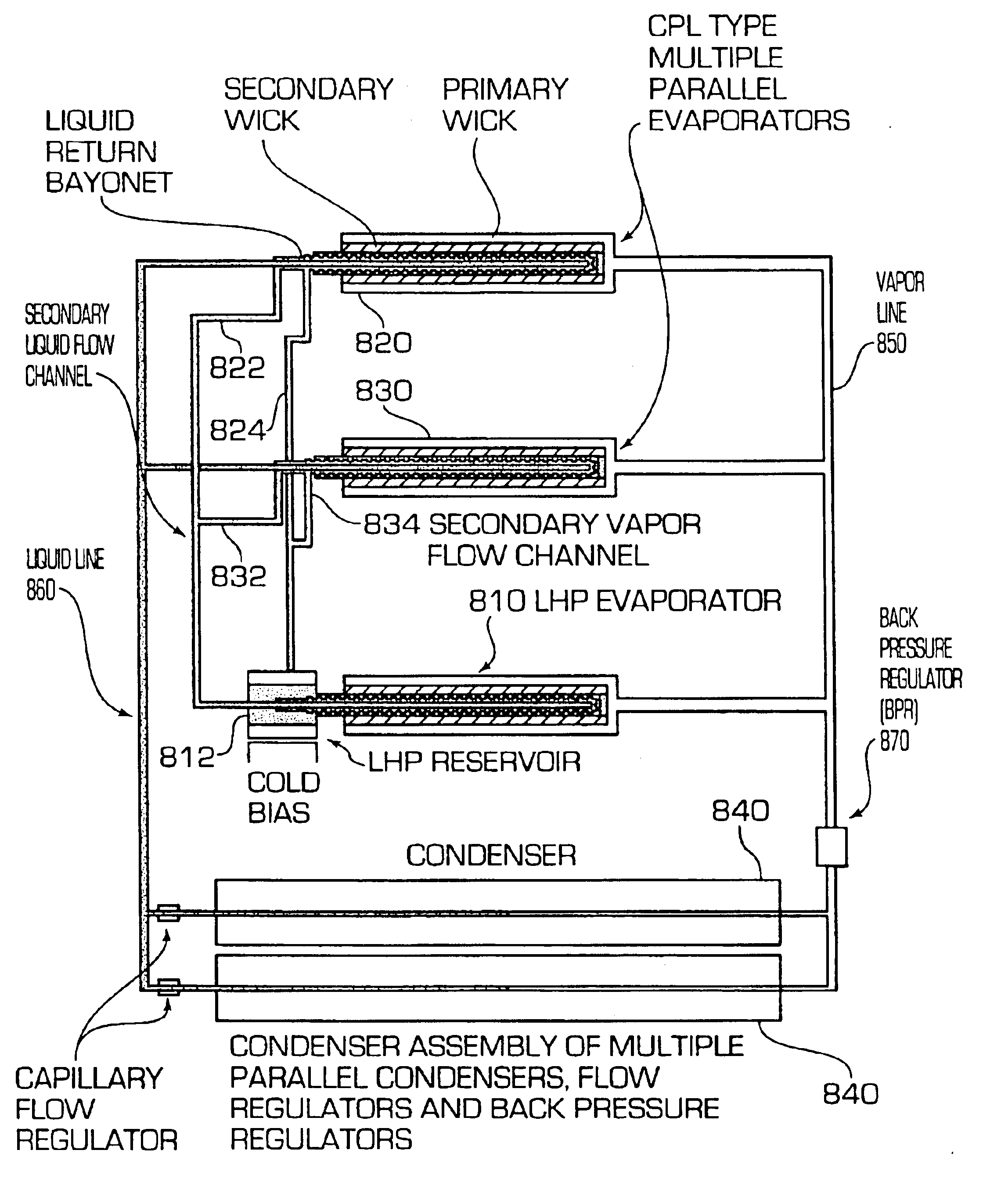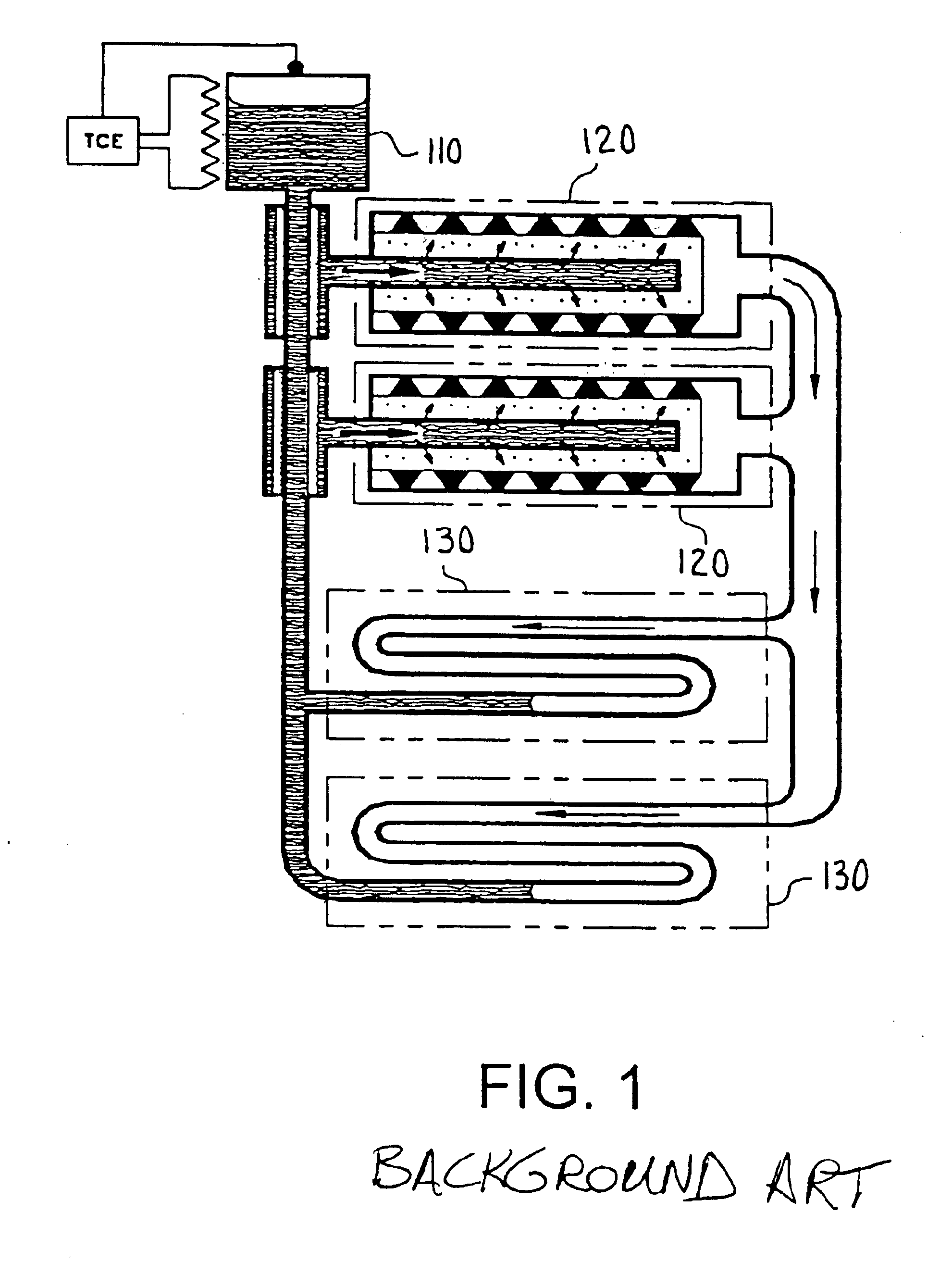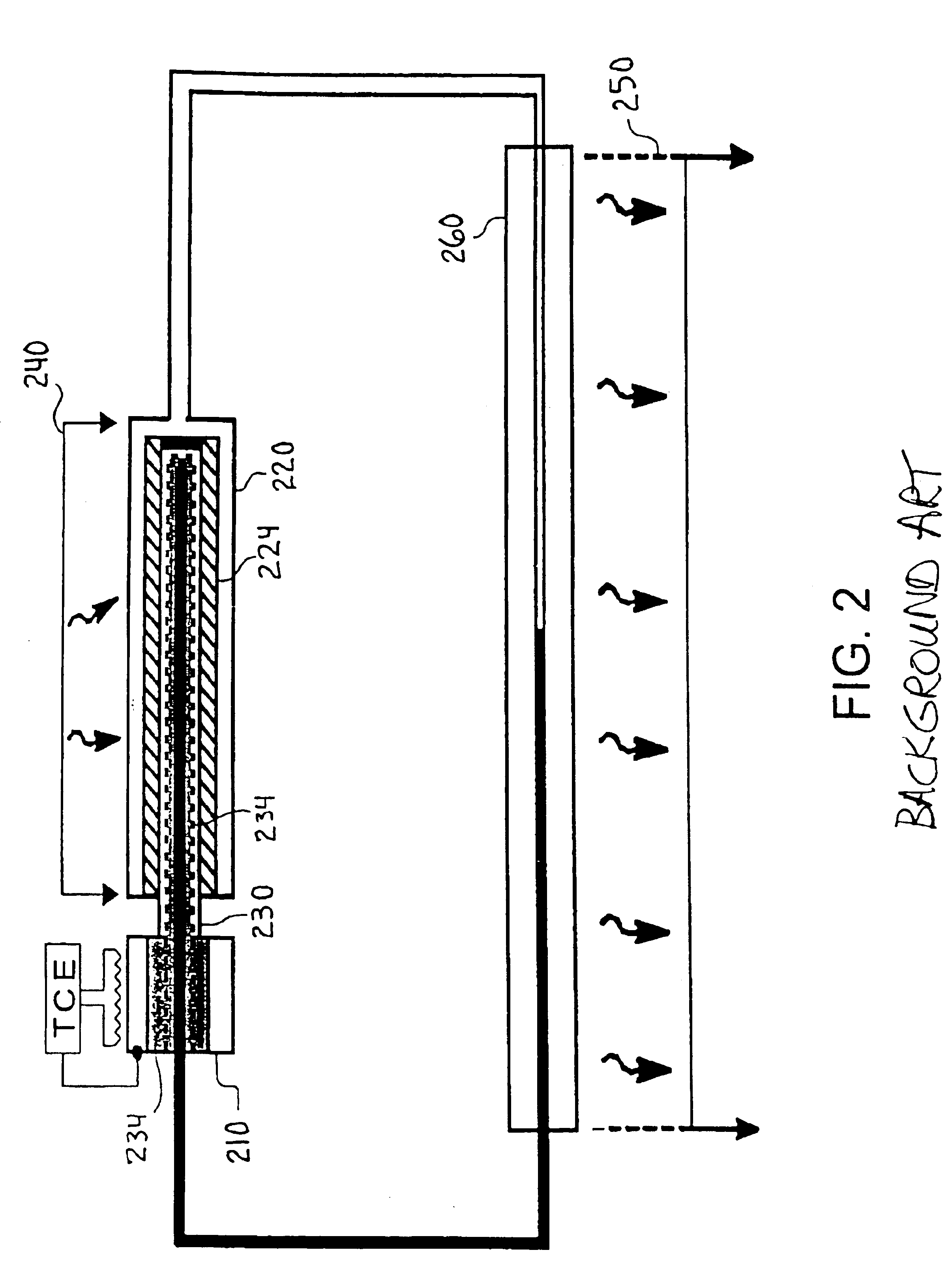Phase control in the capillary evaporators
a phase control and capillary evaporator technology, applied in refrigeration and liquidation, lighting and heating apparatus, refrigeration machines, etc., can solve the problems of limited further evolution and application of cpl's, cpl's are disadvantaged during start-up, and its total reliance on subcooled liquid return to maintain stability, etc., to achieve the effect of robust and reliable operation of a lhp
- Summary
- Abstract
- Description
- Claims
- Application Information
AI Technical Summary
Benefits of technology
Problems solved by technology
Method used
Image
Examples
Embodiment Construction
[0048]Referring to FIG. 8, a schematic view of a Hybrid Capillary Pump Loop (HCPL) heat transport system according to an exemplary embodiment of the present invention is illustrated. The secondary loop consists of an LHP evaporator / reservoir assembly 810 that is plumbed in parallel with multiple modified CPL-type evaporators 820, 830 that are plumbed in parallel with one another. Fluid returning from the condensers 840 in the primary loop enters the liquid core of each modified CPL-type evaporators 820, 830 via a bayonet. In the core of each to the modified CPL-type evaporators 820, 830 the returned fluid is handled so that any liquid phase fluid is separated from any vapor or NCG bubbles that may be generated during the operation of the HCPL and have found their way into the core.
[0049]Most of the liquid in the cores of each of the modified CPL-type evaporators 820, 830 is pumped out through the primary wick. The balance of the liquid in each CPL evaporator core is coupled out via ...
PUM
 Login to View More
Login to View More Abstract
Description
Claims
Application Information
 Login to View More
Login to View More - R&D
- Intellectual Property
- Life Sciences
- Materials
- Tech Scout
- Unparalleled Data Quality
- Higher Quality Content
- 60% Fewer Hallucinations
Browse by: Latest US Patents, China's latest patents, Technical Efficacy Thesaurus, Application Domain, Technology Topic, Popular Technical Reports.
© 2025 PatSnap. All rights reserved.Legal|Privacy policy|Modern Slavery Act Transparency Statement|Sitemap|About US| Contact US: help@patsnap.com



